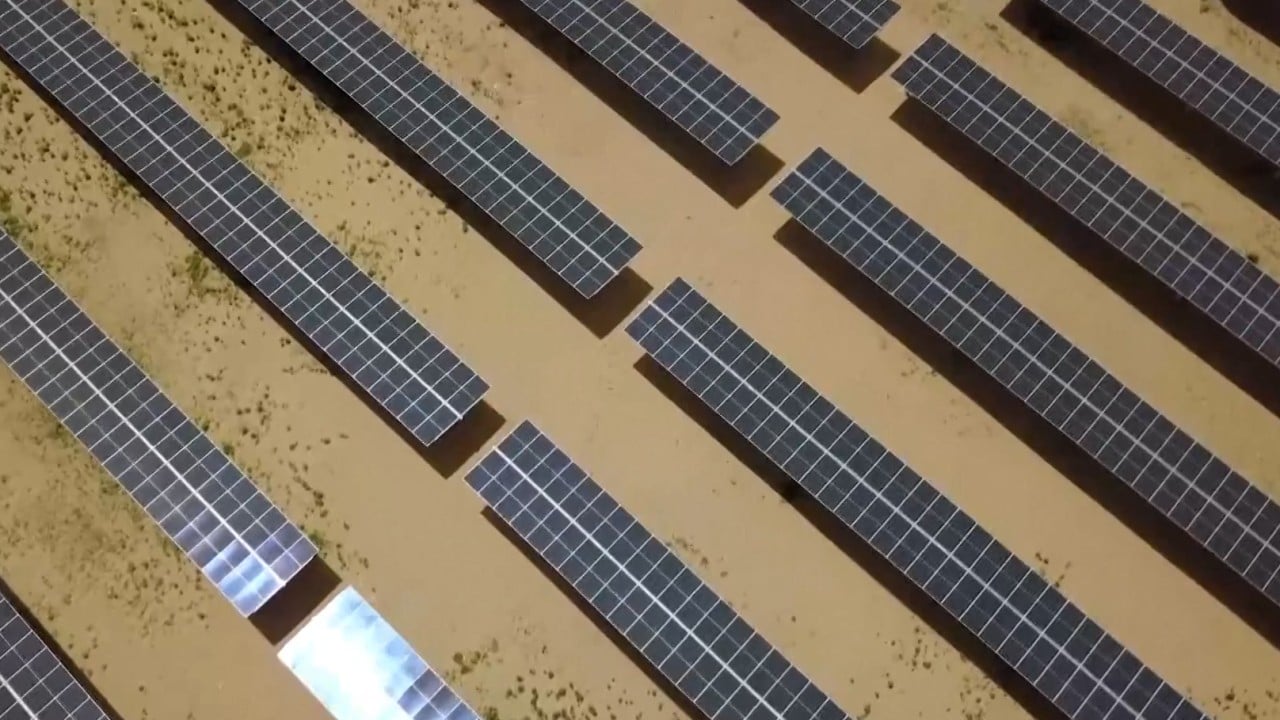China has eased curbs on solar and wind installations to cut use of fossil fuel, a positive sign for the country’s renewable energy sector, which has been struggling with oversupply.
The action plan released by the State Council, China’s cabinet, on Wednesday, aims to improve energy conservation and reduce carbon dioxide emissions for the next two years.
The action plan comes with a “curtailment” caveat for solar and wind power. These plants can operate at a utilisation rate of 90 per cent compared with 95 per cent previously, “if economics prevail”, according to the plan, meaning more renewable energy installations will be allowed but with a lower rate of utilisation.
Investors reacted positively to the development. China’s leading solar company JinkoSolar Holding rose as much as 6.3 per cent in New York on Thursday, while Shanghai-listed Tongwei gained 2.4 per cent.
“We expect some investors to interpret the [easing of the curbs] as a positive for the future of solar and wind installations,” said Leo Ho, an analyst at Daiwa Capital Markets.
China, the world’s largest wind turbine and solar panel manufacturer, has been struggling with oversupply this year because of restrictions imposed by the US and the European Union. The clean energy sector accounted for around a fifth of China’s 5.2 per cent gross domestic product growth in 2023. Beijing has identified solar panels, electric vehicles and lithium batteries as the three new pillars of the country’s economic growth.
The oversupply issue in China’s solar industry is likely to persist until the late-2020s even without new capital expenditure, according to a report from Daiwa.
“Unless solar companies adopt Opec-like supply curbs, solar industry profits will continue to fluctuate around cost levels,” Dennis Ip, an analyst at Daiwa said in the report, adding that such a scenario was highly unlikely.
While some of the targets in the action plan had been announced earlier, the goals for this year are generally more ambitious compared with those achieved a year ago, according to a Citi report on Thursday.
“We regard clean energy targets as having been taken as higher priority by [the Chinese] government,” the report said.
The US bank expects more clean energy capacity addition from large-scale wind power and photovoltaic plants with a focus on deserts in China and from offshore wind power, as well as from large-scale hydropower plants, biomass energy and hydrogen energy.
Fuelled by China’s clean energy initiatives and the country’s dual-carbon goals to reach peak nationwide emissions by 2030 and net-zero emissions by 2060, the country’s energy consumption and carbon emissions are falling, analysts said.
China’s carbon emissions fell by 3 per cent in March, ending a 14-month increase that followed the lifting of zero-Covid controls, said Lauri Myllyvirta, a senior fellow at the Asia Society Policy Institute, in a report.
Meanwhile, the world’s largest consumer of coal could see the use of the polluting fossil fuel peak next year, followed by oil in 2027 and natural gas by 2040, according to a report by Sinopec, China’s largest oil refiner and petrochemicals producer, on Wednesday.
Non-fossil energy is projected to dominate China’s total energy supply by around 2045, and China’s hydrogen energy consumption will reach 86 million tons by 2060, creating an industry worth 4.6 trillion yuan, the report said.
Non-fossil fuel as an energy source for making hydrogen will jump to 93 per cent by 2026, with solar and wind energy contributing to two-thirds of hydrogen production, it added.


